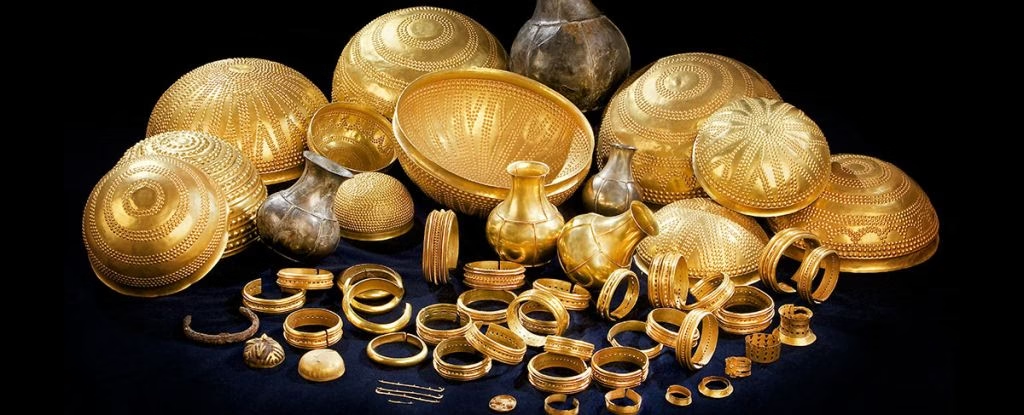Ancient Treasure Reveals Mysterious Extraterrestrial Metal

▼ Summary
– A bracelet and hollow hemisphere from the Iberian Bronze Age were made from meteoritic iron, not terrestrial metal, revealing advanced ancient metalworking techniques.
– The discovery, led by Salvador Rovira-Llorens, suggests Iberian metalworking technology was more sophisticated than previously thought over 3,000 years ago.
– The Treasure of Villena, found in 1963 in Spain, includes 66 mostly gold objects and is among the most significant Bronze Age goldsmithing finds in Europe.
– The two iron-like artifacts posed a dating puzzle because the Iron Age in Iberia began around 850 BCE, while the gold items date to 1500–1200 BCE.
– Testing confirmed the artifacts’ high nickel content, linking them to meteoritic iron and placing them in the same Late Bronze Age period as the rest of the treasure.
Among the dazzling golden artifacts of Spain’s Bronze Age, two unassuming objects may hold the most extraordinary secret. Researchers have determined that a weathered bracelet and a rusted hemisphere adorned with gold were crafted not from earthly metals, but from meteoritic iron that fell from space.
This revelation stems from a study led by Salvador Rovira-Llorens, former head of conservation at Spain’s National Archaeological Museum. The findings suggest that ancient Iberian metalworkers possessed far more sophisticated techniques than previously believed, working with rare extraterrestrial materials over 3,000 years ago.
The artifacts belong to the famed Treasure of Villena, a hoard of 66 predominantly gold items discovered in 1963 near Alicante. Celebrated as one of Europe’s most significant Bronze Age collections, its age has long puzzled archaeologists, particularly due to these two iron-like objects.
Here’s the mystery: The Iron Age, when smelted terrestrial iron replaced bronze, didn’t reach the Iberian Peninsula until roughly 850 BCE. Yet the Villena treasures date back to 1500–1200 BCE, centuries earlier. How could iron objects exist in a Bronze Age cache?
The answer lies in the stars. Meteoritic iron, rich in nickel compared to terrestrial sources, was occasionally used in pre-Iron Age artifacts. Famous examples include Tutankhamun’s dagger and other prized Bronze Age weapons. To test this theory, researchers analyzed the Villena pieces using mass spectrometry, revealing their high nickel content, a telltale sign of cosmic origin.
While corrosion complicates absolute certainty, the evidence strongly indicates these were among the first meteoritic iron artifacts in Iberia, crafted between 1400–1200 BCE. As the study notes, their existence aligns with Late Bronze Age metallurgy, predating widespread terrestrial iron production.
Further non-invasive testing could solidify these findings, offering deeper insights into how ancient civilizations valued and utilized space-born materials. For now, these corroded relics stand as silent witnesses to humanity’s long fascination with the heavens, and the unexpected resources they provided.
(Source: Science Alert)